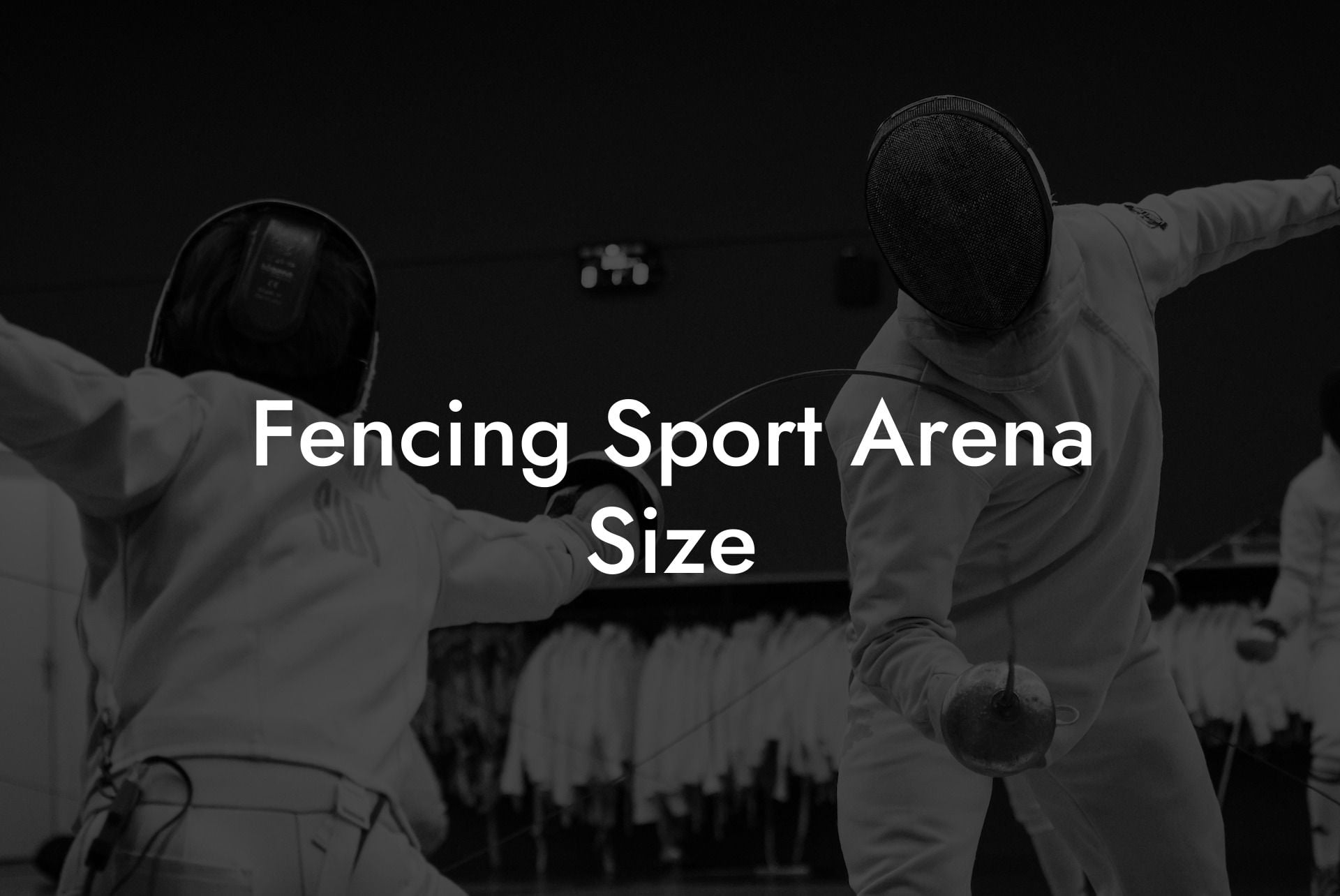As you embark on your journey to becoming a skilled fencer, one of the most important aspects to familiarize yourself with is the fencing sport arena size. Understanding the dimensions and layout of a fencing piste will not only help you strategize during competitions but also provide the foundation for safe and efficient practice sessions.
Fencing Sport Arena Size Table of Contents
The Basics of a Fencing Piste
A fencing piste, also known as a fencing strip, is the designated area where fencers compete against each other. The size of the piste is standardized by the Fédération Internationale d'Escrime (FIE) to ensure consistent dimensions for all fencing competitions worldwide.
Dimensions of a Fencing Piste
- Length: 14 meters (45.93 feet)
- Width: 1.5-2 meters (4.92-6.56 feet)
The length allows for ample movement back and forth during bouts, while the narrow width encourages direct attacks and promotes strategic fencing.
Additional Markings on the Piste
Along with its dimensions, a fencing piste also features specific markings to guide the fencers during their bouts:
- On-Guard Lines: These are two lines situated at a 2-meter (6.56 feet) distance from the center of the piste. Fencers begin their bouts with their front foot just behind these lines.
- Warning Lines: Located 2 meters (6.56 feet) away from each end of the piste, these lines serve as a caution for fencers approaching the edge of the strip. Retreating past these lines could result in a penalty.
- Boundary Lines: These lines mark the two sides of the piste. Fencers stepping beyond these lines can also face penalties for leaving the piste.
Choosing Fencing Piste Materials
While the dimensions of a fencing piste are fixed, the material used for constructing the piste can vary. Below are the two most common types of fencing piste materials:
Metallic Piste
Metallic pistes consist of aluminum or similar conductive materials. They assist in recording scores electronically, as they ground out electrical systems and prevent floor touches from registering as valid touches. Metallic pistes are most commonly used in high-level competitions and are the standard for FIE events.
Non-Metallic Piste
Non-metallic pistes are made from materials like rubber or vinyl. They're more budget-friendly than metallic pistes and are portable, which makes them suitable for temporary practice spaces or local tournaments.
Fencing Sport Arena Size Example:
Imagine you're participating in your first national fencing competition. As you step onto the metallic piste and position yourself on the on-guard line, you're fully aware of the location of the warning lines and the edge of the piste. Through your familiarity with the fencing sport arena size, you're better prepared to execute strategic moves and avoid unnecessary penalties during your bouts.
Familiarizing yourself with fencing sport arena size is a crucial aspect of your overall fencing technique and strategy. Now that you know the dimensions and layout of a fencing piste, as well as the differences in materials, we encourage you to share this article with fellow fencers and explore other comprehensive guides on Anchorage Fencing Club to continue cultivating your skills in this exhilarating sport. May your newfound knowledge lead you to victory on the piste!













